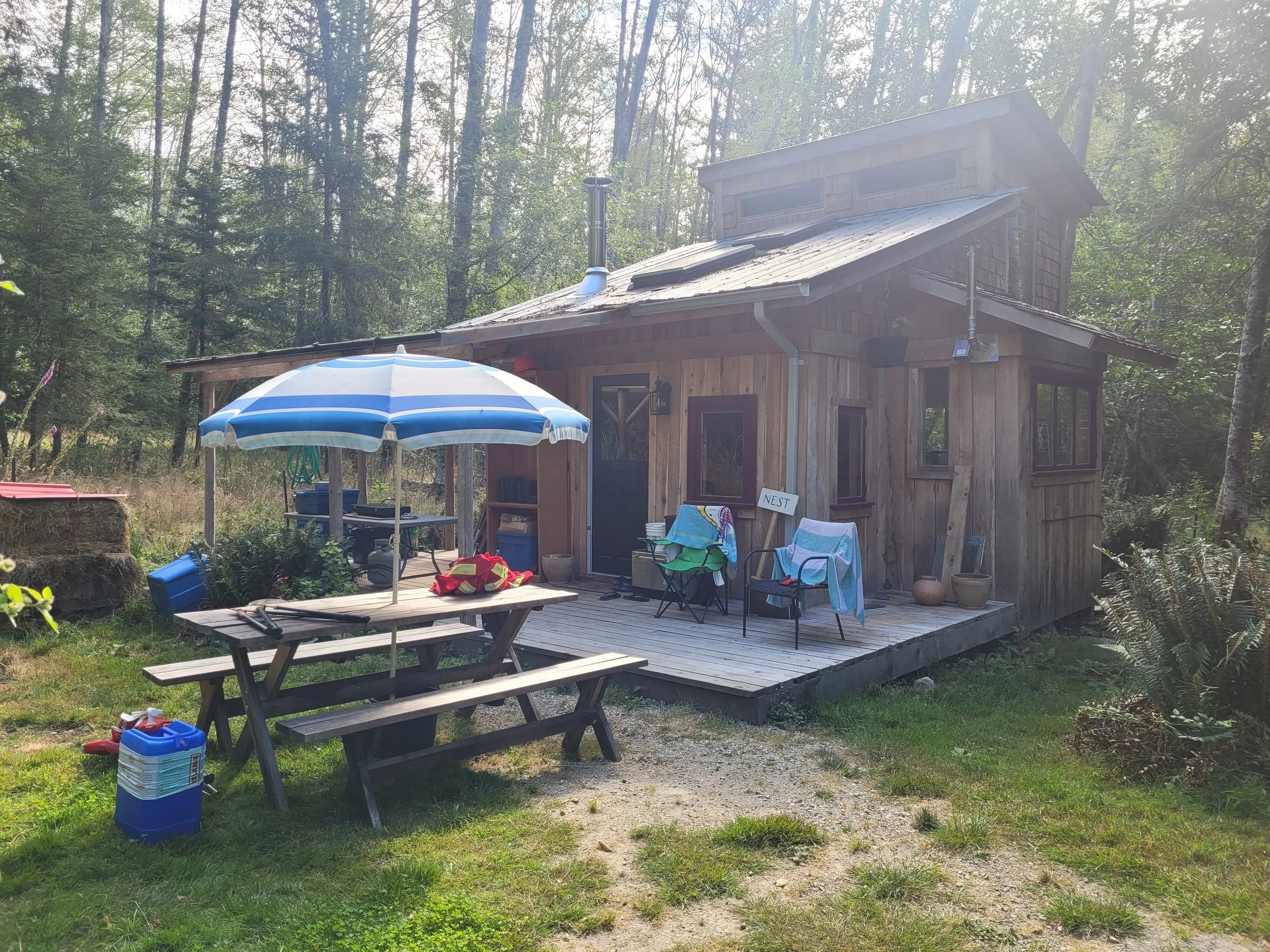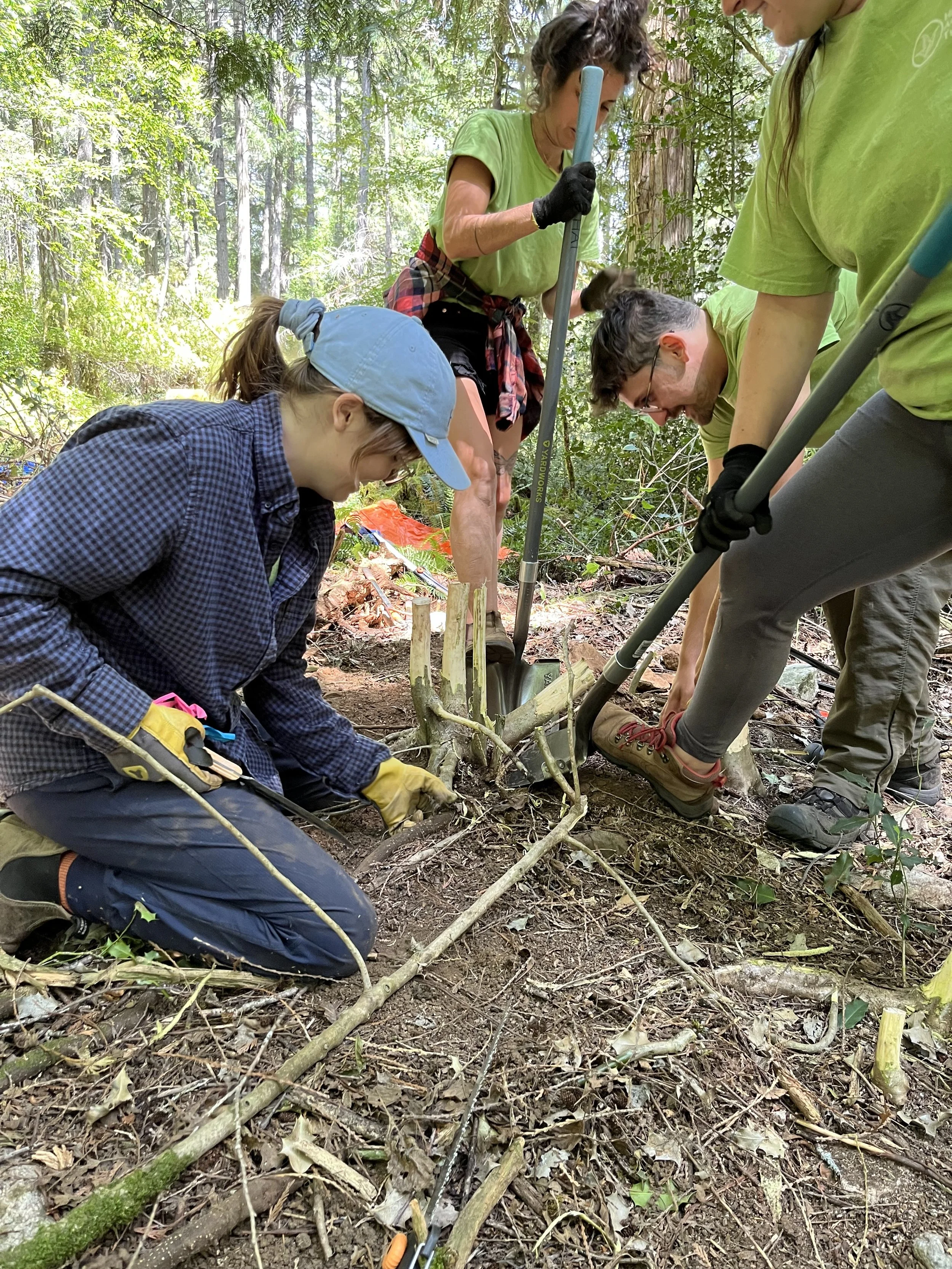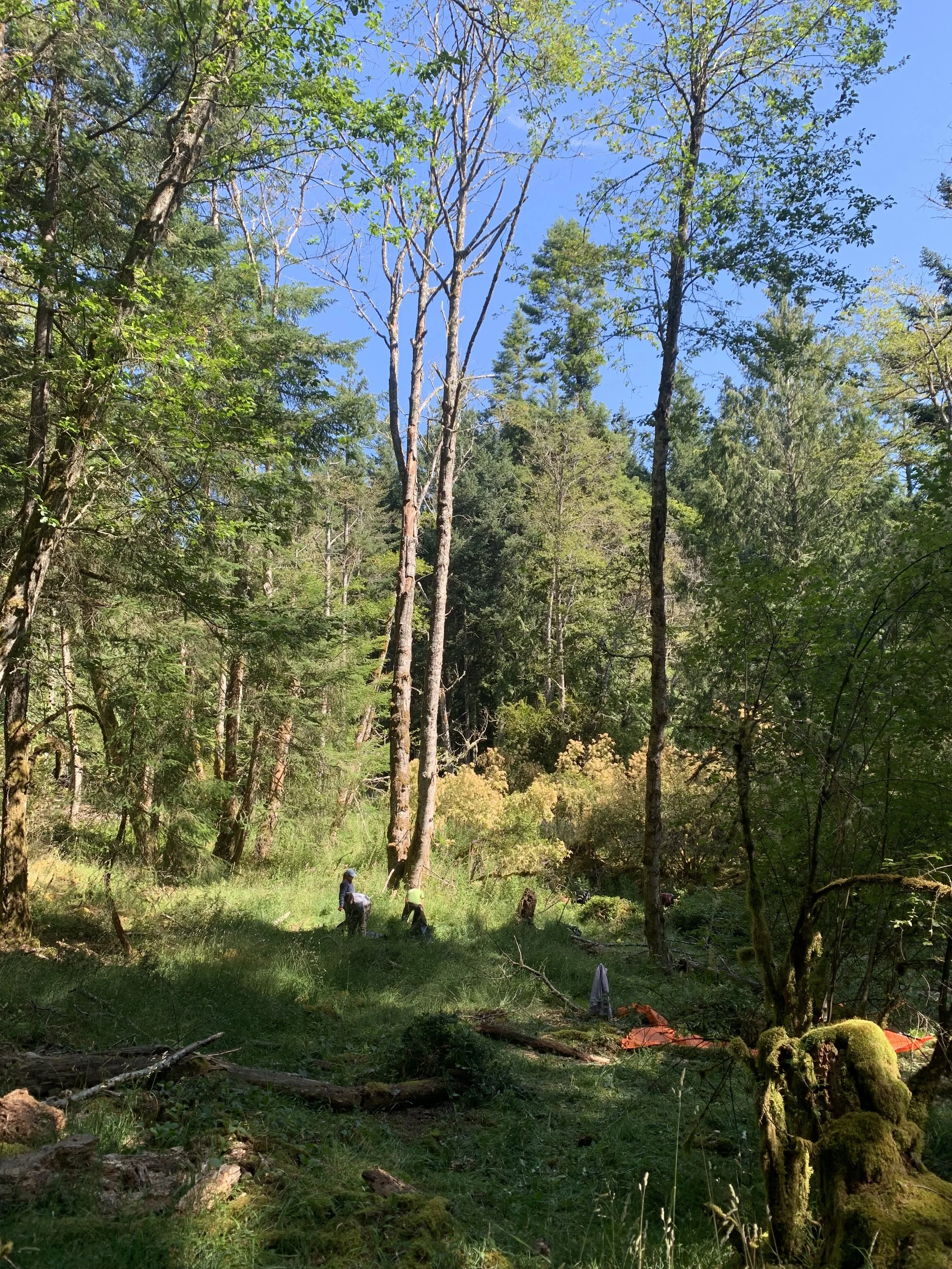The HAT Field Crew on Salt Spring Island
August 8 2023
On July 10, 2023, HAT’s Summer Restoration Field Crew began their journey to Salt Spring Island, where they would spend four wonderful days restoring Prairie Oak ecosystems and exploring the area. HAT partnered with the Nature Conservancy of Canada (NCC) to help remove invasive plant species from Reginald Hill Conservation Area, which sits on a mountain slope overlooking Fulford Harbour.
Rocky bluffs, moist valleys, and lush woodland make up Reginald Hill’s 161-hectare forest. This conservation area is protected from development by NCC. It is home to rare and at-risk ecosystems associated with the Coastal Douglas-fir biogeoclimatic zone, including Garry-oak meadows, Douglas-fir forests, and temporary wetlands. In turn, it provides refuge for the endangered plants and wildlife these ecosystems support.
The crew set up tents next to a beautiful garden bed and used a small cabin on the property to cook meals together and relax after working on the hill.
Over the four days, the crew covered over 1500 square meters and removed 25 cubic meters of invasive English holly, thistle, and foxglove. English holly (Ilex aquifolium), the main focus of the Salt Spring site, is best known for its popularity as a holiday decoration. It is considered highly invasive in B.C., spreading rapidly and outcompeting native species for resources like light and groundwater.
To identify English holly, look for its distinctive evergreen leaves that are often prickly, dark green, and shiny. You will also find clusters of bright red berries and small, white flowers blooming in the spring. The plant can take the form of a shrub or a small tree, ranging from 1-10 meters in height.
The field crew pulled small plants by hand but had to break out the hand saws to cut back the larger stumps. Occasionally, they managed to dig out large root balls as a team (see right).
The group also saw some spectacular wildlife during their trip, including a Long-toed salamander (Ambystoma macrodactylum). They first spotted this small amphibian by noticing a bright yellow stripe coiled at the base of a decaying log.
Long-toed salamanders have grey or black skin and bear this distinctive stripe along their back and tail. The salamander’s name reflects the length of its fourth toe on both hind feet. Long-toed salamanders are typically found in moist areas, making this wet forest valley on Reginald Hill an optimal home for the small amphibian.
HAT hopes to return to Reginald Hill to continue restoring this conservation area. Thank you again to NCC for making this experience possible!







